Abstract
Four birds key pecked on concurrent variable-interval one-minute variable-interval four-minute schedules with a two-second changeover delay. Response rates to the variable-interval one-minute key were then reduced by signaling its reinforcer availability and later by providing its reinforcers independently of responding. Each manipulation increased response rates to the variable-interval four-minute key even though relative reinforcement rates were unchanged. In a final phase, eliminating the variable-interval one-minute key and its schedule produced the highest rates of all to the variable-interval four-minute key. These results show that both reinforcement and response rates to one schedule influence response rates to another schedule. These results join those of Guilkey, Shull, & Brownstein (1975) in failing to replicate Catania (1963). Moreover, they violate the predictions of the equation for simple action (de Villiers & Herrnstein, 1976). In terms of a median-rate measure (reciprocal of the median interresponse time), rates to the variable-interval four-minute key were high when responding was not reduced to the variable-interval one-minute key and were low when it was reduced. This rate difference suggests a process difference between concurrent-schedule procedures that maintain high concurrent response rates versus those that do not. This process difference jeopardizes attempts to integrate single- and concurrent-operant performances within a single formulation.
Keywords: concurrent schedules, equation-for-simple-action, matching law, response independence, key peck, pigeons
Full text
PDF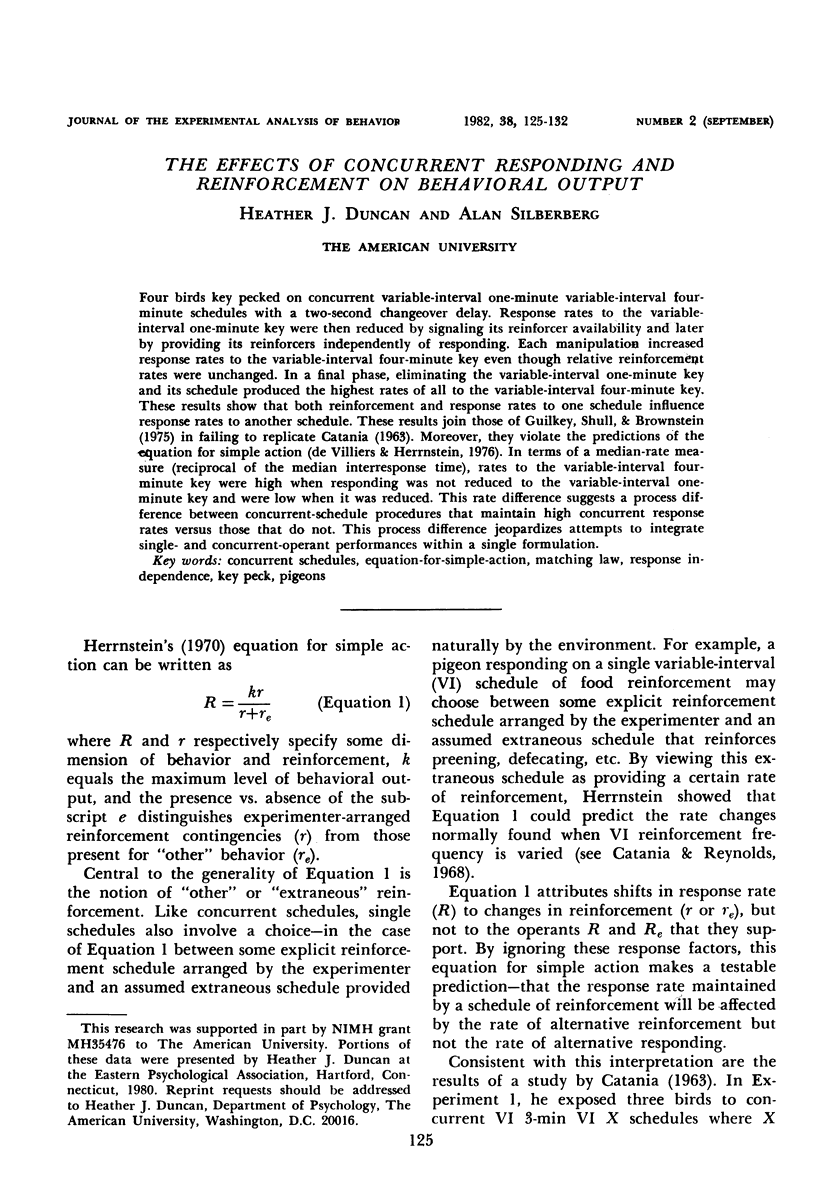

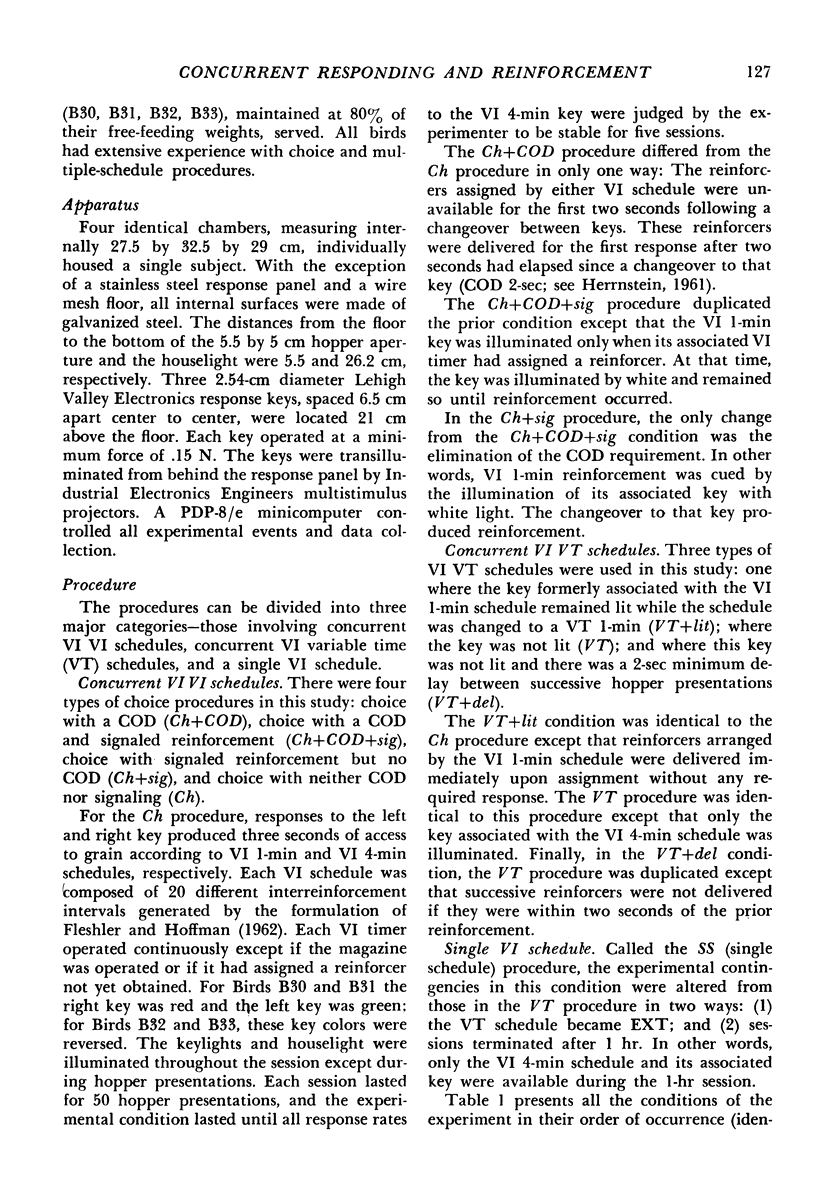
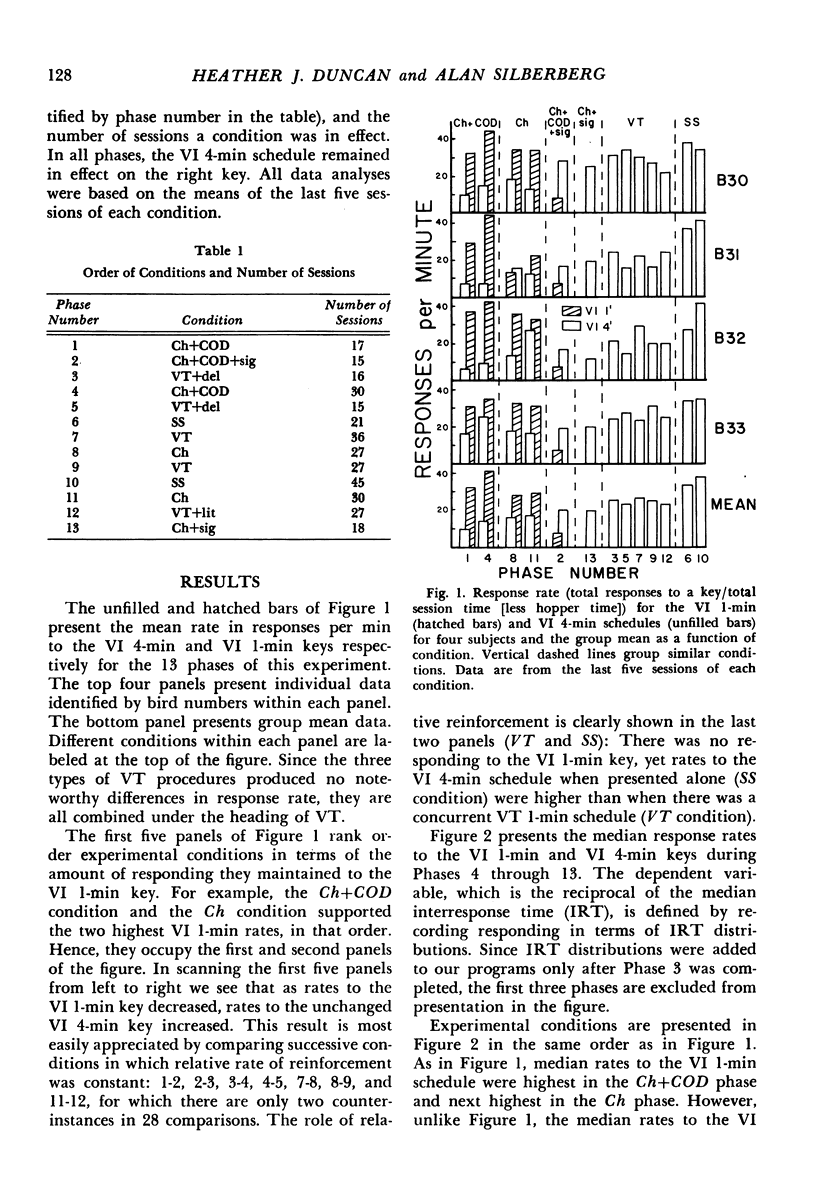
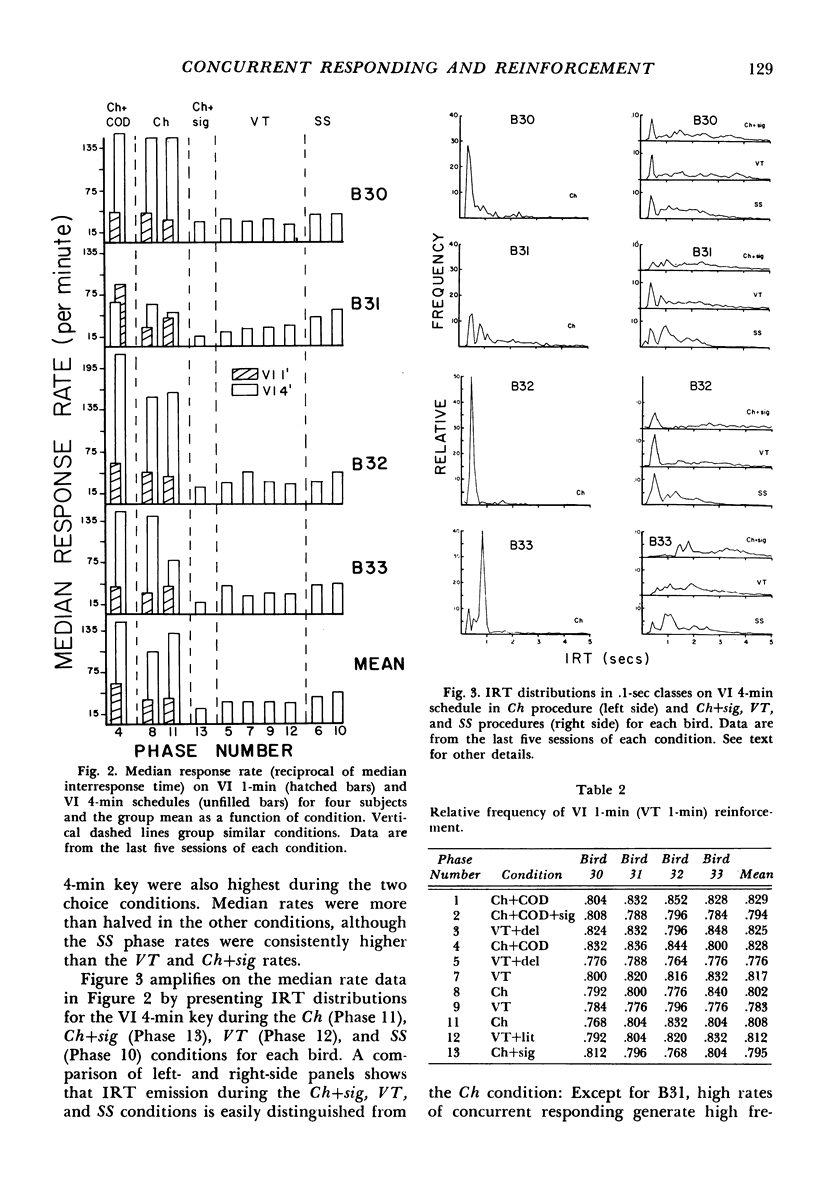
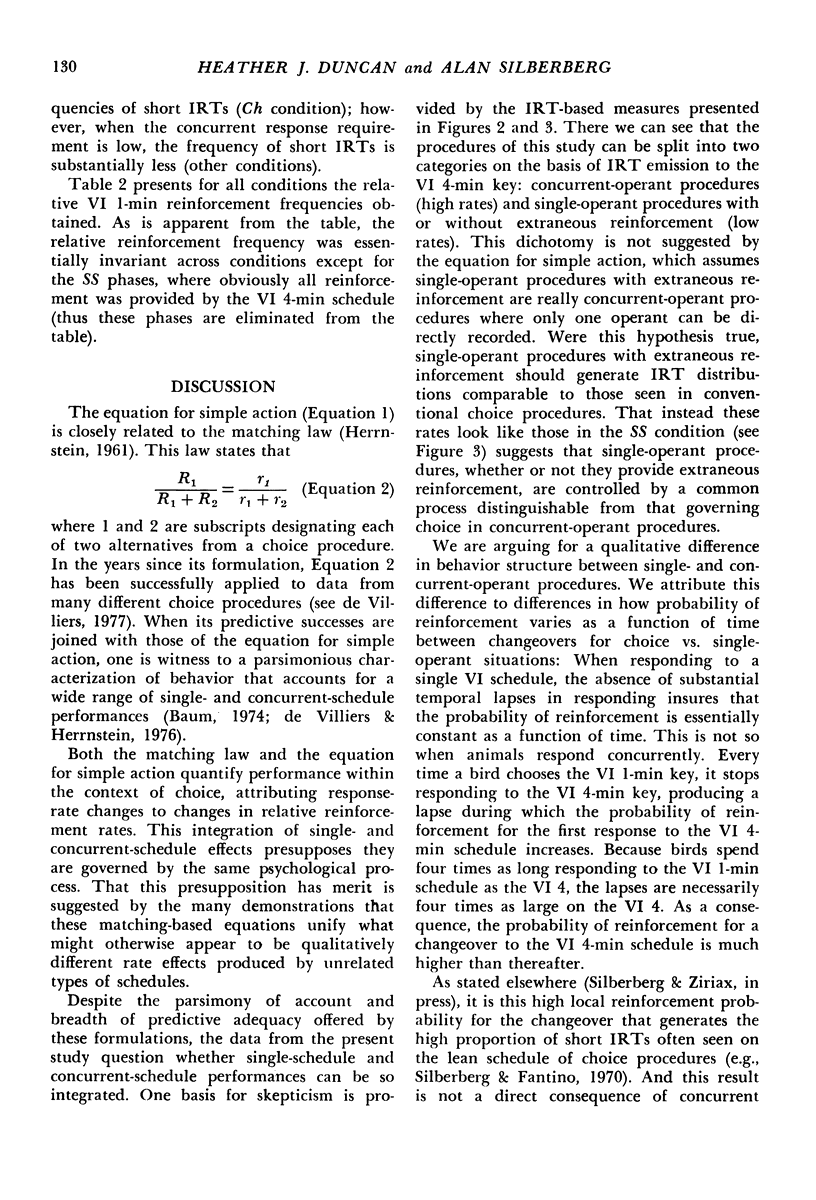
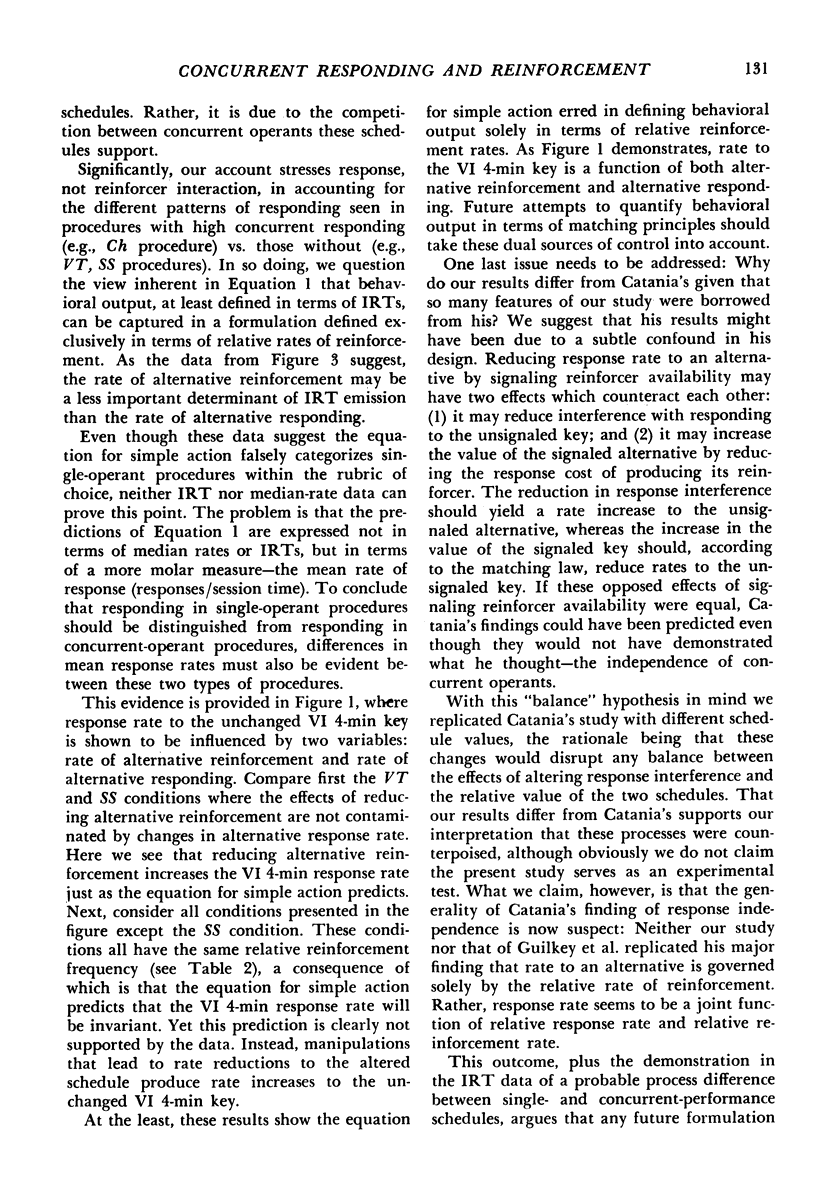
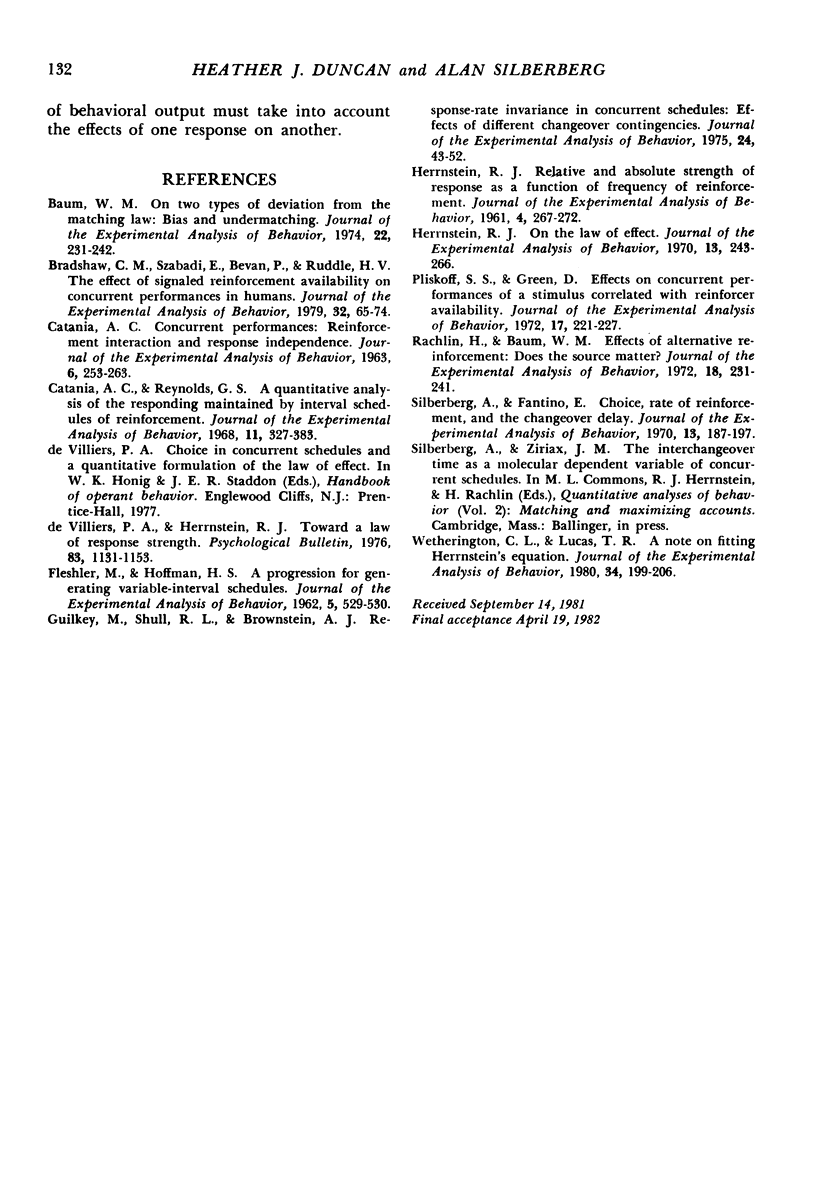
Selected References
These references are in PubMed. This may not be the complete list of references from this article.
- Baum W. M. On two types of deviation from the matching law: bias and undermatching. J Exp Anal Behav. 1974 Jul;22(1):231–242. doi: 10.1901/jeab.1974.22-231. [DOI] [PMC free article] [PubMed] [Google Scholar]
- Bradshaw C. M., Szabadi E., Bevan P., Ruddle H. V. The effect of signaled reinforcement availability on concurrent performances in humans. J Exp Anal Behav. 1979 Jul;32(1):65–74. doi: 10.1901/jeab.1979.32-65. [DOI] [PMC free article] [PubMed] [Google Scholar]
- CATANIA A. C. Concurrent performances: reinforcement interaction and response independence. J Exp Anal Behav. 1963 Apr;6:253–263. doi: 10.1901/jeab.1963.6-253. [DOI] [PMC free article] [PubMed] [Google Scholar]
- Catania A. C., Reynolds G. S. A quantitative analysis of the responding maintained by interval schedules of reinforcement. J Exp Anal Behav. 1968 May;11(3 Suppl):327–383. doi: 10.1901/jeab.1968.11-s327. [DOI] [PMC free article] [PubMed] [Google Scholar]
- FLESHLER M., HOFFMAN H. S. A progression for generating variable-interval schedules. J Exp Anal Behav. 1962 Oct;5:529–530. doi: 10.1901/jeab.1962.5-529. [DOI] [PMC free article] [PubMed] [Google Scholar]
- Guilkey M., Shull R. L., Brownstein A. J. Response-rate invariance in concurrent schedules: effects of different changeover contingencies. J Exp Anal Behav. 1975 Jul;24(1):43–52. doi: 10.1901/jeab.1975.24-43. [DOI] [PMC free article] [PubMed] [Google Scholar]
- HERRNSTEIN R. J. Relative and absolute strength of response as a function of frequency of reinforcement. J Exp Anal Behav. 1961 Jul;4:267–272. doi: 10.1901/jeab.1961.4-267. [DOI] [PMC free article] [PubMed] [Google Scholar]
- Herrnstein R. J. On the law of effect. J Exp Anal Behav. 1970 Mar;13(2):243–266. doi: 10.1901/jeab.1970.13-243. [DOI] [PMC free article] [PubMed] [Google Scholar]
- Lee Wetherington C., Lucas T. R. A note on fitting Herrnstein's equation. J Exp Anal Behav. 1980 Sep;34(2):199–206. doi: 10.1901/jeab.1980.34-199. [DOI] [PMC free article] [PubMed] [Google Scholar]
- Pliskoff S. S., Green D. Effects on concurrent performances of a stimulus correlated with reinforcer availability. J Exp Anal Behav. 1972 Mar;17(2):221–227. doi: 10.1901/jeab.1972.17-221. [DOI] [PMC free article] [PubMed] [Google Scholar]
- Rachlin H., Baum W. M. Effects of alternative reinforcement: does the source matter? J Exp Anal Behav. 1972 Sep;18(2):231–241. doi: 10.1901/jeab.1972.18-231. [DOI] [PMC free article] [PubMed] [Google Scholar]
- Silberberg A., Fantino E. Choice, rate of reinforcement, and the changeover delay. J Exp Anal Behav. 1970 Mar;13(2):187–197. doi: 10.1901/jeab.1970.13-187. [DOI] [PMC free article] [PubMed] [Google Scholar]


